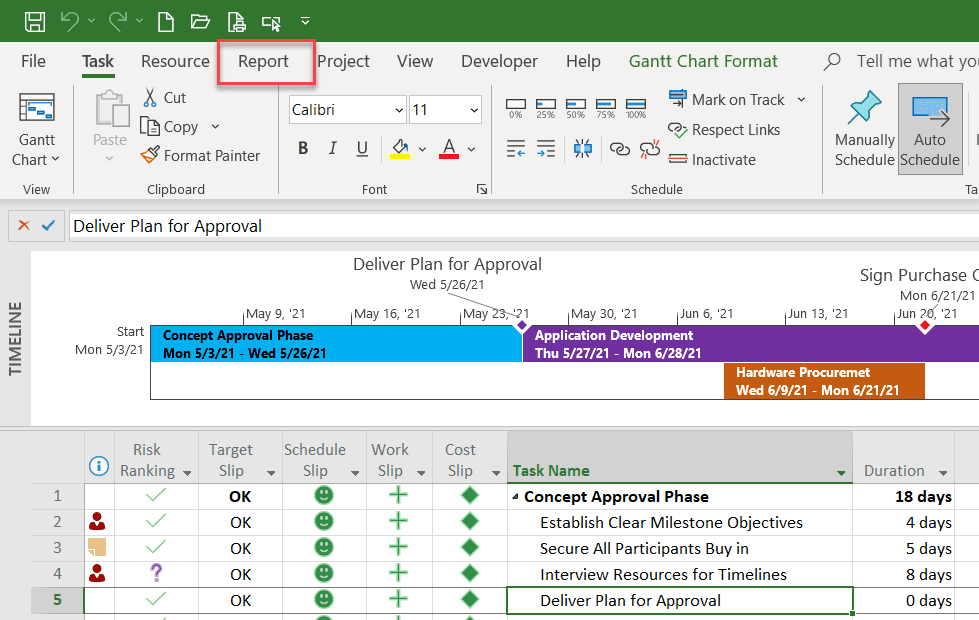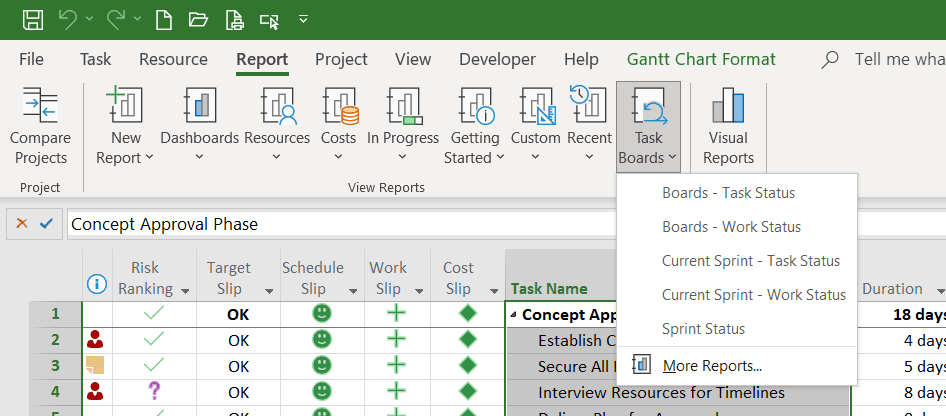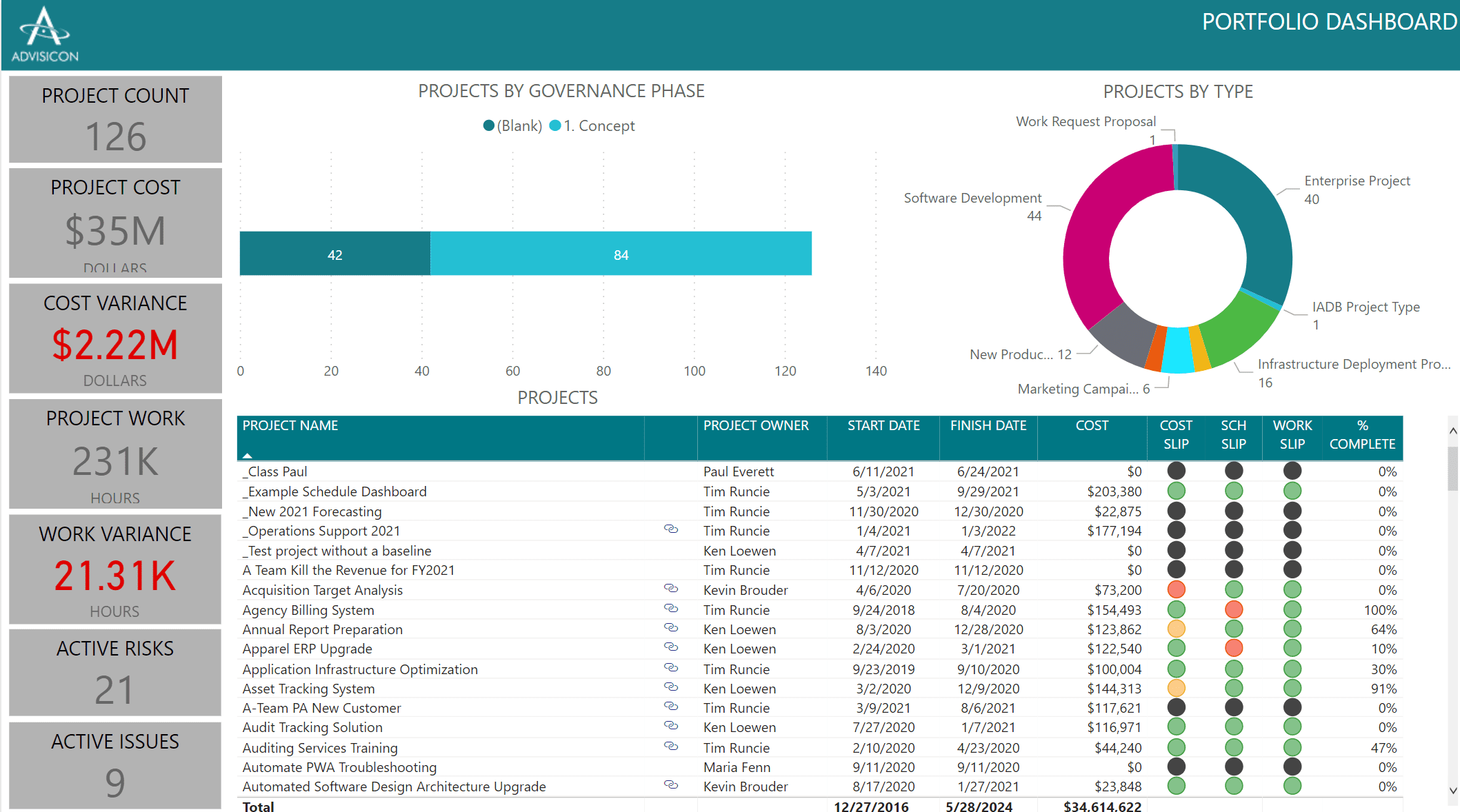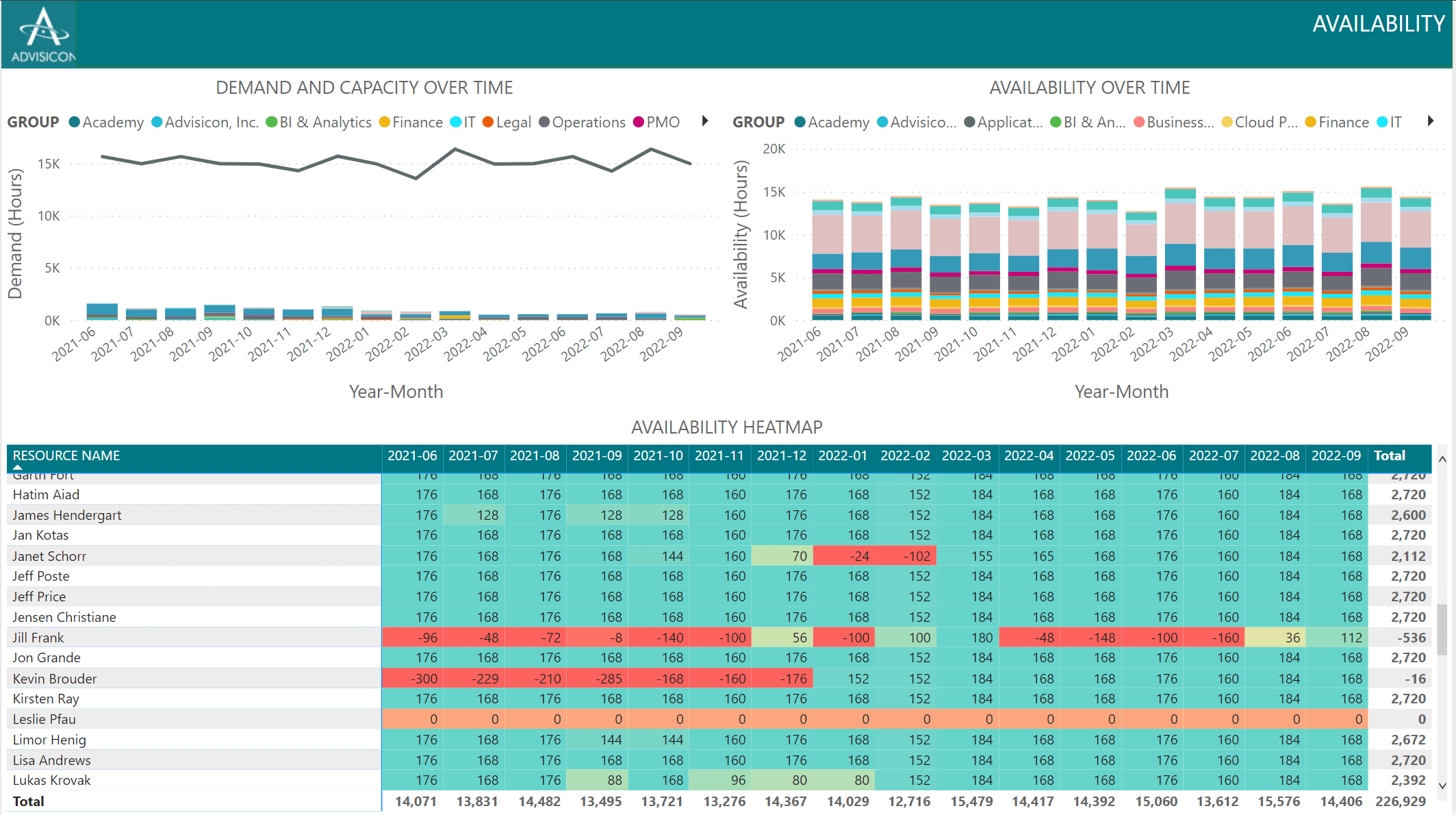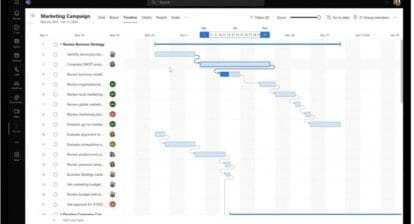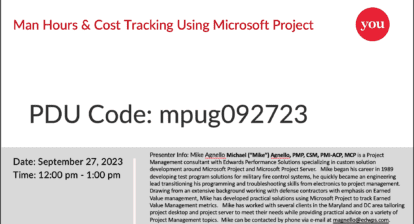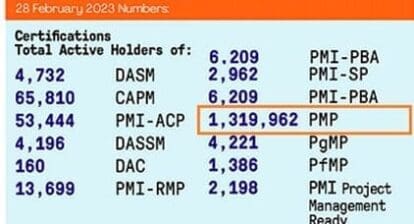This last misconception is a very interesting one. Microsoft has struggled with the concept of creating powerful reporting engines within their applications. The engineering team seems to have concluded that to build a reporting engine for each tool separately (PowerPoint, Word, Excel, Project, etc.) doesn’t make sense. They can, through the Office source code, share the engines between the applications.
Excel, of course, has been the long-standing reporting engine. In fact, the same “Get Data” engine used in Excel is the one used in Power BI. More on Power BI in a minute.
That said, Project Desktop has a built in Office / Pivot / Filter Group engine, which leverages the M365 Reporting engine. This is OK, and while I would love to see it grow, it would be like wanting separate and personal swimming pool for everyone living in an apartment complex—not efficient and a horrific nightmare to support.
Project Desktop’s reporting engine can be found here in the Project Desktop application.
If you click within the Report tab, you will find many standard categories, including Dashboards, Resources, Costs, In Progress, and even the ability to customize your own reports or use the Agile Task/Sprint Reports that comes “out of the box.”
There are legacy Visual Reports (porting data to Excel and Visio), but this requires a bit more work. I do like the PERT Layout in Visio.
To better understand reporting with the MS Project suite, you have to understand the direction of Server based reporting (Legacy Project Server on a SQL Server environment) and the move to using Power BI (which is Microsoft Flagship reporting tool across all applications). There are some great reporting capabilities, along with Power BI Report Packs available for both Project Online / Project Server (they both use ODATA), as well as Project for the web (P4W).
As mentioned previously, there are a number of good resources for those who really want to get a jump start on reporting:
- I always recommend checking the Project Blog. A good post to start with is this one: A new Project Online Content Pack for Power BI – Microsoft Tech Community
- You can download the package as a App from Power BI here: https://app.powerbi.com/groups/me/getdata/services/project-online
- If you are familiar with GitHub, check out this template.
The company I work for tweaks and improves these for a customized experience, so free to reach out to me if I can be of help.
Power BI is part of the Power Platform by Office 365 (Power BI, Power Apps, and Power Automate), and is designed to help give visibility to the data in the Dataverse (Office 365 Universe of applications), as well as any data source (even non-Microsoft platforms).
Here is an example of a standard dashboard that reads Projects and SharePoint sites for a single view:
You can generate a heat map for work (planned and forecasted) vs. the Global Resource Pool. I love heat maps, as they can help you tell the story in an almost 3-dimensional manner and with rows, columns, data, and the color to elevate ranges, etc.
There are many more of these reports that come with the report packs for both Project Server, Project Online, and Project for the web, so I hope you’ll check them out. Don’t despair about reporting. Microsoft is pushing further to streamline, standardize, and ensure users have an excellent reporting experience.
As a long-time MPUG member, speaker, and sponsor, I can say with certainty that MPUG is one of the best quality platforms and user groups available to the project management tech community. Come and learn about great tools and methodology approaches.
And, I hope this series on common misconceptions was helpful for you. Check out my other posts at the links below and the videos I have on YouTube. There are additional tips, shortcuts, and other content out there to help you succeed in your project management career. Don’t miss my upcoming live panel, in which we will have an open discussion (taking audience questions) to address both the direction Microsoft is taking to improve and guide their Project PPM technologies, as well as addressing these common misconceptions and more that people have about Microsoft Project.
I love hearing success stories, so let me know how it goes for you as leverage Project and Microsoft PPM tools.
- The misconception of “Project is Not for Agile or An Agile Tool“
- The misconception of “P4W Can’t Be Customized”
- The misconception of “Project Desktop is Going Away and PWA with It”
- The misconception of “Managing Resources in Project is Too Hard”


